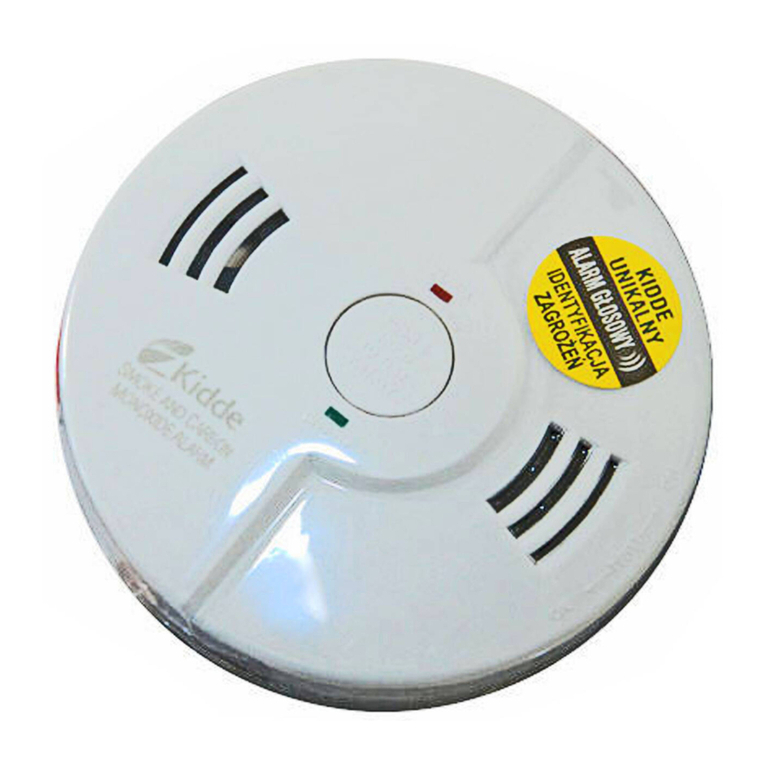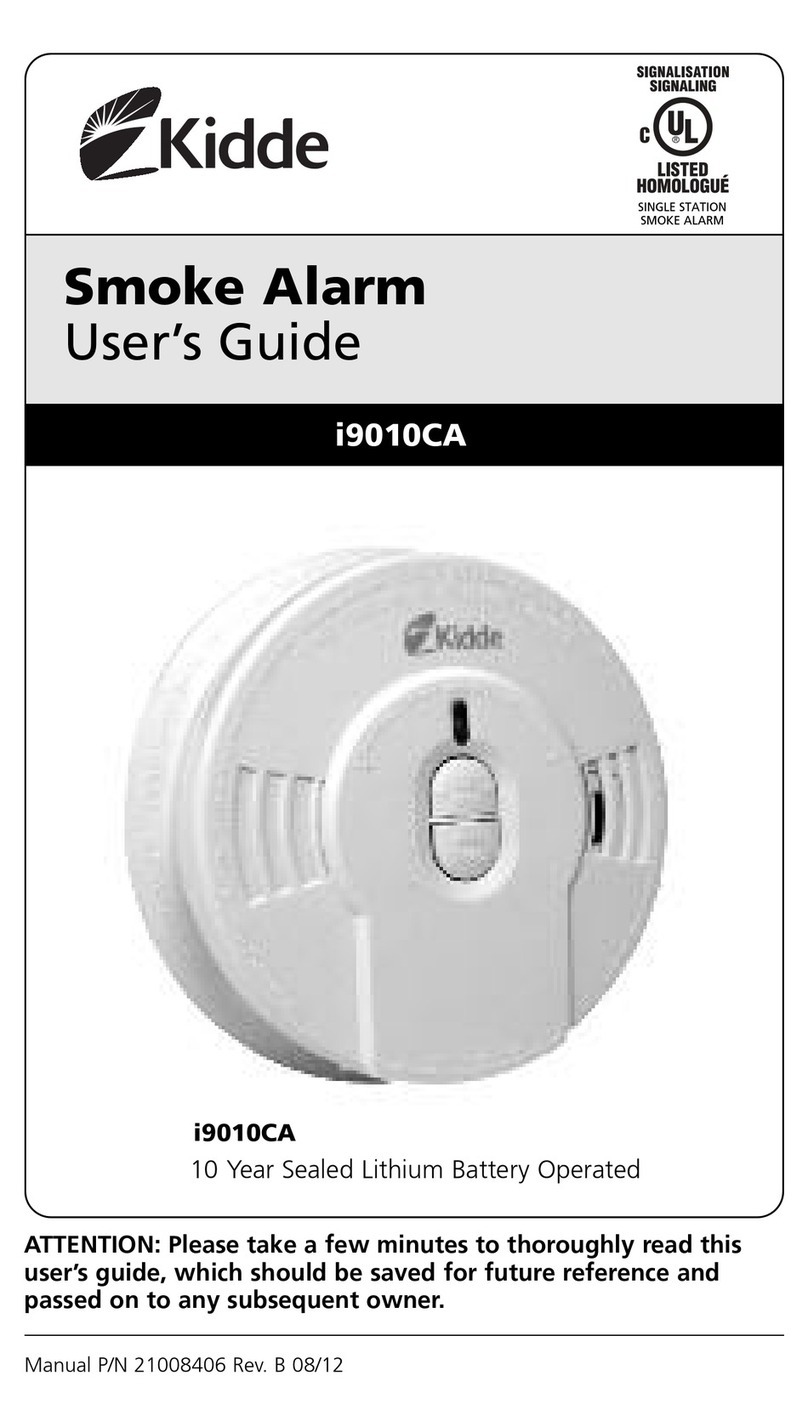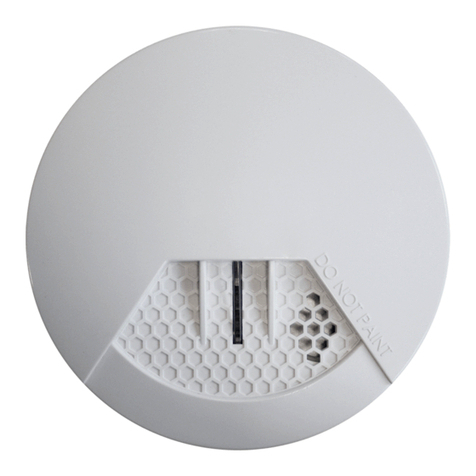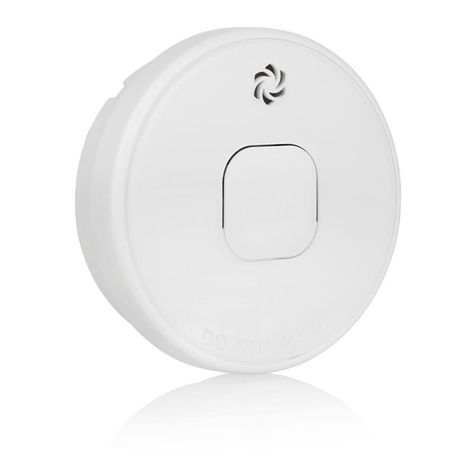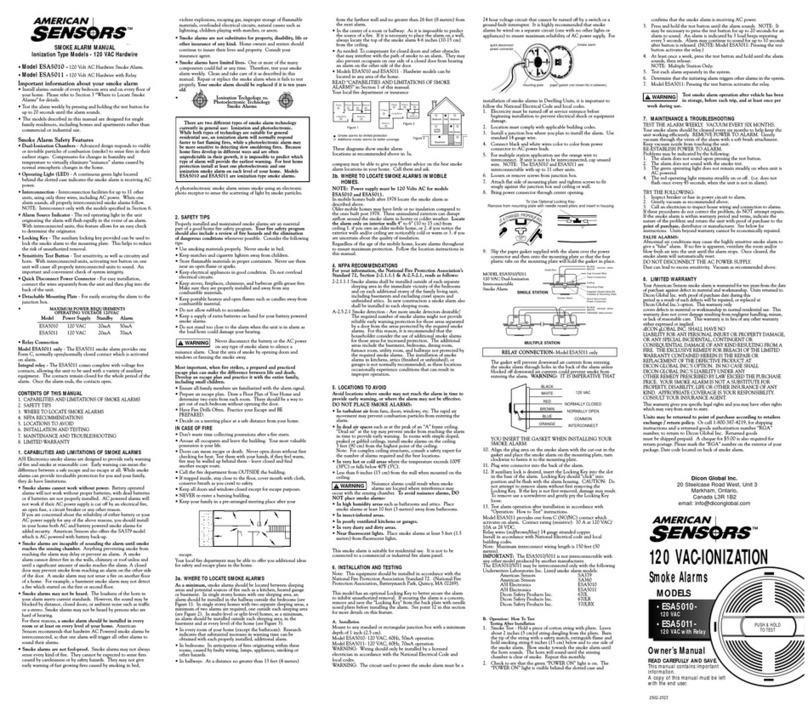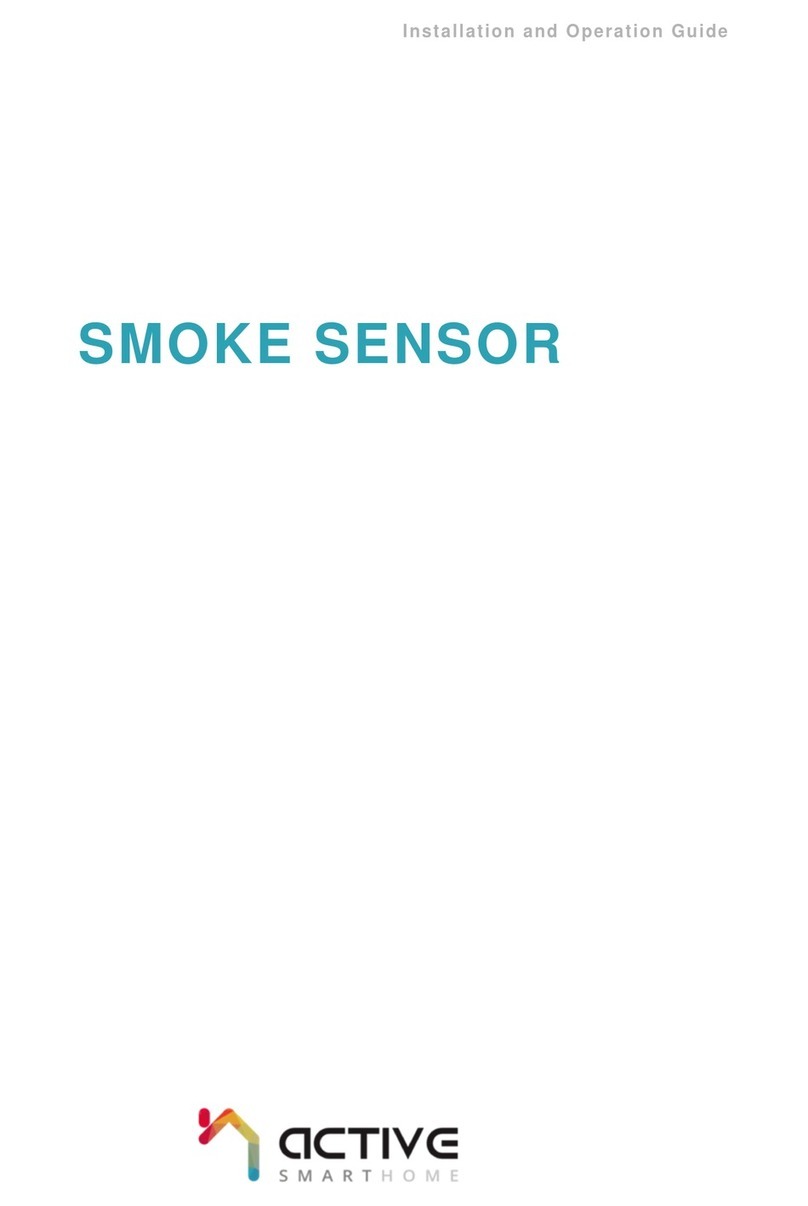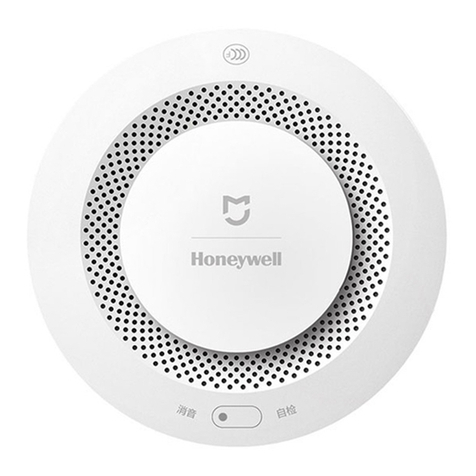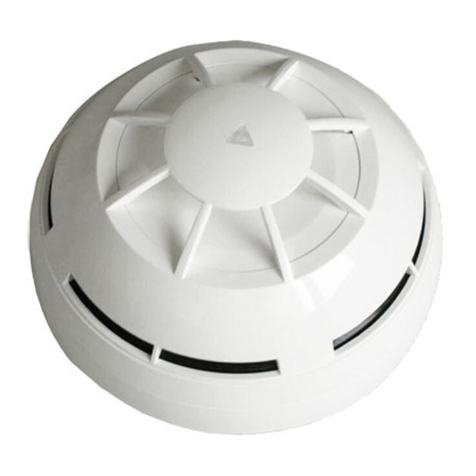Vision Systems VESDA Guide

Vision Fire & Security
Refrigerated
Storage
Design Guide
March 2006
i


VESDA®Refrigerated Storage Design Guide
Copyright
This document is protected by copyright under the laws of Australia and other jurisdictions
throughout the world. It must not by any means, either in whole or part, be reproduced,
communicated to the public, adapted, distributed, sold, modified, published except as permitted by
any laws or statute or with prior written consent of Vision Fire & Security Pty Ltd.
Copyright ©2006 Vision Fire & Security Pty Ltd ABN 25 008 009 514
Disclaimer
The manufacturer reserves the right to change designs or specifications without obligation and
without further notice. VESDA, LaserTEKNIC, LaserPLUS, LaserSCANNER, LaserCOMPACT,
LaserFOCUS, VESDAnet, VESDAlink, ASPIRE, ASPIRE2, AutoLearn, VSM, PSM, VConfig,
InfoWORKS, PROACTIV, PRECISION, VSC, ADPRO, FastTrace, FastVu, FastScan, Axiom, PRO,
Amux and Video Central are trade marks used under licence by the distributor.
i

Refrigerated Storage Design Guide VESDA®
ii

VESDA®Refrigerated Storage Design Guide
Contents
1. Introduction.............................................................................................................................................. 1
1.1 About This Design Guide ................................................................................................................. 1
1.2 Quick Reference............................................................................................................................... 1
2. Background Information......................................................................................................................... 2
2.1 Fire Safety Considerations In Refrigerated Storage Facilities......................................................... 2
2.2 Performance-Based Design............................................................................................................. 3
2.3 Key Design Considerations.............................................................................................................. 3
2.4 Why Use VESDA Smoke Detection?............................................................................................... 4
3. Designing For Effective Fire Protection................................................................................................ 4
3.1 Sample Pipe Material....................................................................................................................... 5
3.2 Positioning Pipes And Sample Holes............................................................................................... 5
3.3 Sample Pipe Insulation..................................................................................................................... 7
3.4 Sealing Sample Pipe Penetrations................................................................................................... 7
3.5 Compensating For Sample Pipe Contraction................................................................................... 8
3.6 In-rack Protection............................................................................................................................. 9
3.7 Ceiling Void Protection..................................................................................................................... 9
3.8 Other Areas To Be Protected......................................................................................................... 10
4. Preventing Condensation And Crystallization.................................................................................... 10
4.1 The Effects Of A Temperature Drop .............................................................................................. 10
4.2 Condensation On The Sample Pipe Outer Surface....................................................................... 10
4.3 Crystallization On The Sample Pipe Outer Surface....................................................................... 11
4.4 Condensation Inside Sample Pipes............................................................................................... 11
4.5 Crystallization Inside Sample Pipes............................................................................................... 12
5. Installation Considerations................................................................................................................... 12
5.1 Sampled Air Warming .................................................................................................................... 12
5.2 Heat Tracing................................................................................................................................... 14
5.3 Exhaust Air Treatment.................................................................................................................... 14
5.4 Water Traps.................................................................................................................................... 15
5.5 Integration With Pre-action Sprinklers............................................................................................ 15
5.6 Battery Backup............................................................................................................................... 17
6. Ongoing Considerations....................................................................................................................... 17
6.1 Running The VESDA System ........................................................................................................ 17
6.2 System Commissioning.................................................................................................................. 18
6.3 Service And Maintenance.............................................................................................................. 18
7. Appendix – Heat Tracing....................................................................................................................... 19
8. References.............................................................................................................................................. 21
iii

Refrigerated Storage Design Guide VESDA®
iv

VESDA®Refrigerated Storage Design Guide
1. Introduction
1.1 About This Design Guide
Vision Systems Ltd has produced this Design Guide as a reference, to be consulted when
designing and specifying VESDA fire protection solutions for freezers, cold storage areas and
loading bays with temperatures ranging from minus 40°C (-40°F) to 18°C (65°F)[1].
Unlike most commonly used passive fire detection devices, VESDA detectors are able to function
in sub-zero climates without losing their very early warning smoke detection capabilities. For this
reason, they have been extensively used in refrigerated storage facilities for many years and are, in
fact, the only Factory Mutual (FM) approved smoke detection and fire suppression activation
system for such facilities.
In this Design Guide we will discuss the relevant design considerations and make
recommendations regarding the most effective way in which to install a VESDA solution in the
particular refrigerated storage facility for which it is being designed.
Important Note: The information contained in this Design Guide should be used in conjunction
with specific local fire codes and standards. Other regional industry practices, where applicable,
should also be adhered to.
1.2 Quick Reference
The key design considerations presented in Table 1 are an overview only. They should be used in
conjunction with the remainder of the information presented in this Design Guide and in the
relevant VESDA System Design Guide[2].
Table 1 – Key design considerations for a VESDA system in a refrigerated storage facility.
Component Key Design Considerations Detailed Information
Pipe material and insulation
must be suitable for low
temperatures.
Sections 3.1, 3.3 and 3.5
All connections in the pipe
network must be air-tight. Sections 3.4, 3.5 and 4.4
Sampled air MUST NOT be
subjected to vastly differing
sub-zero temperatures within
the freezer area.
Sections 3.5, 4.1, 4.2 and 4.3
The integrity of the freezer
must be maintained at all
sample pipe entrance points.
Section 3.4
VESDA exhausted air must be
returned to the protected zone. Section 5.3
VESDA Pipe
Only use water traps where the
external temperature is lower
than within the protected zone.
Sections 4.4 and 5.4
Avoid placing sample holes
close to the freezer entrances. Sections 3.2 and 4.3Sample Holes
Avoid sampling directly from
the path of the chiller air
supply.
Section 3.2
1

Refrigerated Storage Design Guide VESDA®
Table 1 Continued.
Component Key Design Considerations Detailed Information
Detectors must be installed
outside the protected zone. Section 1.4
Detectors must be installed
inverted, to prevent water
entering them via the pipe
network.
Sections 3.4 and 4.4
Sampled air can be warmed
where necessary. Consider a
method.
Sections 5.1 and 5.2
VESDA Detector
Consider the battery backup
required. Section 5.5
Integration With Pre-action
Suppression Installing VESDA with a pre-
action sprinkler systems. Section 5.6
2. Background Information
2.1 Fire Safety Considerations In Refrigerated Storage Facilities
According to statistics, released by the NFPA[3], the major fire risks within a refrigerated storage
facility arise from the following:
• Electrical or mechanical faults in conveyor and other transport equipment.
• Electrical equipment, wiring and other equipment housed in the roof space.
• The lighting system.
• Hot spots resulting from maintenance operations.
• Discarded cigarette butts.
• Arson.
Due to the large amounts of plastic present in this type of facility, in the form of packaging
materials, a fire would produce large amounts of highly toxic and corrosive smoke which would
damage assets and endanger personnel. The large amounts of fuel available, in the form of stock
and the highly flammable light weight sandwich panels from which such facilities are constructed,
would also cause fires to spread quickly from one area to another. Table 2 provides guidelines for
those areas in a refrigerated storage facility that it is essential to protect.
Table 2 – Guidelines for areas to be protected.
Area Essential Recommended Optional
Freezers/Chiller Rooms 9
Coolers 9
Plant and Maintenance
Areas 9
Return Air Path Under the
Protected Area 9
Loading Bays and
Surrounding Areas 9
Office/Monitoring Area
9
Ceiling/Roof Voids 9
Within Racks
9
2

VESDA®Refrigerated Storage Design Guide
In cases where a pre-action sprinkler system is to be included as part of the fire protection, the
VESDA system can be used to activate the release mechanisms as discussed in section 5.6.
2.2 Performance-Based Design
The flexibility of Performance-Based Design allows the fire protection system to be tailored to the
specific requirements of each individual refrigerated storage environment, with the commercial
drivers to manage the risks.
Detector spacing or, for a VESDA pipe, sample hole spacing is traditionally dictated by local
prescriptive codes and standards. In a more performance-based approach, each installation is
assessed according to its specific environmental conditions (ceiling height, airflow rate, expected
temperature range etc). Sample hole spacing and location can then be altered easily to suit the
particular performance requirements . Appropriate VESDA alarm sensitivities are determined by
conducting in-situ smoke tests and evaluating the system response.
Performance-based design concepts can be used in most countries as they adhere to many
international fire engineering guidelines, such as those listed below:
• International Fire Engineering Guidelines (Edition 2005)[4].
• British Standard BS7974[5].
• SFPE Engineering Guide to Performance-Based Fire Protection[6].
While this alternative fire protection solution can be made to comply with local and national codes
and standards, for buildings and life safety, assessments of the environmental risks and
performance requirements, specific to the particular refrigerated storage facility, are also conducted
as part of the design process.
Standard risk management concepts, like those listed below, are also often used for refrigerated
storage facility assessment:
• AS/NZS 4360, 1999[7].
• SFPE Handbook Third Edition, 2002[8].
Note: The SFPE Code Officials’ Guide to Performance-Based Design Review[9] is a very good
source of information for Authorities Having Jurisdiction (AHJs) reviewing and assessing a VESDA
system design for a refrigerated storage facility.
2.3 Key Design Considerations
For the purposes of this Design Guide, the following temperature ranges apply to the various areas
to be protected:
• Freezers -40°C to -15°C (-40°F to 5°F).
• Chillers -9°C to 2°C (16°F to 36°F).
• Coolers and Loading Bays 0°C to 18°C (32°F to 65°F).
Important Note: VESDA Detectors MUST NOT be installed in sub-freezing environments.
A fire protection system designer would normally ask the following questions, when specifying and
designing a VESDA smoke detection system in a refrigerated storage facility:
1. What level of protection is required and how will fire safety be managed?
2. Is the integrity of the pipe network adequate with respect to being air-tight?
3. What temperature range and humidity will be experienced by pipes within the refrigerated
storage facility, pipes in any other areas to be protected and the detectors themselves?
4. Are there likely to be any future changes with regard to the function of the area due to
demand or operational needs? For example, might a refrigerated storage facility be
converted to a cold storage area?
3

Refrigerated Storage Design Guide VESDA®
5. What are the airflow characteristics of the protected areas, entrances and loading bays?
6. What are the pipe insulation requirements?
7. What effects might the defrost cycles and associated condensation have on fire protection?
8. What is the possibility of condensation occurring both within and on the outside of the pipe
network?
9. What is the configuration of racking within the areas to be protected?
10. How well sealed are the wall and ceiling insulation panels?
11. Is pre-action suppression to be included in the fire protection system and, if so, how will it be
integrated with the VESDA system?
2.4 Why Use VESDA Smoke Detection?
VESDA Aspirating Smoke Detection (ASD) systems have been used to protect refrigerated storage
facilities for many years. Most fire protection technologies which are designed to operate in
freezing conditions are not capable of early warning detection and are prone to being damaged by
equipment such as forklift trucks. The very early warning capability of VESDA detectors means that
they are able to detect the incipient (pre-combustion) stage of a fire which drastically reduces
business disruption, asset damage and the potential risks to the safety of personnel. The design
flexibility of VESDA systems also allows them to be used for the automatic activation of pre-action
suppression, both gaseous and sprinkler.
The combustible nature of the types of materials normally stored in refrigerated environments,
combined with the very dry high airflow in such environments, creates a significant fire risk. Fires
will spread rapidly between cardboard or plastics packaging, grease impregnated materials, food
stuffs and wooden pallets. Hence, the earlier a fire can be detected the better.
The perishable nature of the goods, commonly stored in freezers or coolers, makes it essential that
any rise in temperature be avoided. Heat from a fire or a rise in temperature due to refrigeration
system down time, following a fire, would both result in stock spoilage and hence loss of revenue.
Even an incipient fire, in this type of environment, can lead to significant losses if not detected and
managed early. Stock exposed to low levels of smoke over an extended period of time will become
contaminated.
Other advantages of the VESDA system are that, with a properly designed system, performance
will be reliable and little influenced by condensation or the high airflows caused by blast chillers.
The deficiencies of other detector technologies in low temperatures are recognized by many
international codes and standards which regulate against the use of them in environments where
the ambient temperature is less than 0°C (32°F)[10]. Linear heat cables are permitted in freezers but
are prone to damage by forklift trucks and other common work procedures. Since VESDA detectors
are installed outside the protected area, only the sample pipe network is exposed to sub zero
temperatures. Being on the ceiling and inside voids makes it unlikely that the VESDA sample pipes
will be damaged.
Note: Unlike the FM approved VESDA system, linear heat cables are specifically for the activation
of pre-action suppression and cannot simultaneously provide the very early warning smoke
detection which may prevent the need for suppression.
3. Designing For Effective Fire Protection
In this section, design methodologies will be described with consideration for the different
requirements depending on the function of the particular area being protected.
Important Note: The latest version of ASPIRE2TM, the VESDA sample pipe modelling program,
should be used for all pipe network designs.
4

VESDA®Refrigerated Storage Design Guide
3.1 Sample Pipe Material
The choice of pipe material will depend on where the pipe is to be located. For instance, installation
of ceiling mounted pipes can be made easier by using long lengths of pipe material suited to coping
with low temperatures and internal temperature fluctuations. Such materials include the Halogen-
free Fire-retardant high Temperature (HFT) plastics, Acrylonitrile Butadiene Styrene (ABS) and
High Density Polyethylene (HDPE). Suitable materials and their properties are presented in Table 3
below.
Table 3 – Properties and recommended applications for pipe materials[11-14].
Material Operating Temperature Thermal Contraction Recommended
Applications
PVC -18°C (-40 to 120°F) 7.0 mm per 10 m per 10°C
(0.28” per 32.8 ft per 18°F)
Above -18°C (0°F)
HFT -40 to 140°C
(-40 to 284°F)
7.0 mm per 10 m per 10°C
(0.28” per 32.8 ft per 18°F)
Above –40°C (-40°F)
ABS -40 to 80°C
(-40 to 176°F)
10.1 mm per 10 m per 10°C
(0.4” per 32.8 ft per 18°F)
Above –40°C (-40°F)
CPVC -18 to 94°C
(0 to 201°F)
6.7 mm per 10 m per 10°C
(0.26” per 32.8 ft per 18°F)
Above -20°C (0°F)
PE-80 -50 to 60°C
(-58 to 140°F)
20 mm per 10 m per 10°C
(0.79” per 32.8 ft per 18°C)
Above –50°C (-58°F)
PE-100 -50 to 60°C
(-58 to 140°F)
13 mm per 10 m per 10°C
(0.52” per 32.8 ft per 18°F)
Above –50°C (-58°F)
An added advantage of using a continuous semi-flexible pipe material such as HDPE[14] is the
reduction in the number of pipe junctions required.
3.2 Positioning Pipes And Sample Holes
The various international codes and standards specify detection point spacing or maximum area of
coverage per detection point for a variety of different airflow rates, ceiling heights and structures
etc. In compliance with these prescriptive regulations, VESDA sample holes would be located in
the same positions as individual smoke detection devices. Alternatively, with reference to local
codes, the pipe and sample hole configuration can be determined by satisfying performance-based
design requirements.
Note: For Factory Mutual (FM) approved, refrigerated storage, VESDA installations the sample
holes should be placed as for heat detectors as outlined in the latest edition of the FM 8-29
Datasheet and Memorandum 0805 [1, 15].
Sample hole locations are usually represented by a grid like that shown below (Figure 1). The letter
X represents the sample hole spacing required according to local codes and standards.
5

Refrigerated Storage Design Guide VESDA®
Figure 1 – Top view of a grid layout for VESDA sample holes.
In some freezers, depending on the effectiveness and frequency of defrosting management, ice will
build up around the entrances. Under these circumstances, VESDA sample holes in the immediate
proximity may become blocked by ice. This is normal and can be managed by specifying an
appropriate system airflow fault threshold. The effects of blocked sample holes could be
compensated for as follows:
• By placing the sample hole closest to the entrances as far away as is legally permitted by local
codes and standards.
• By partial in-rack sampling near the entrances. Ice build-up is usually at the ceiling above the
doorways, seldom within the racks.
• By placing VESDA pipes away from the path of chiller air supplies.
Note: Sample hole diameter MUST be larger than 3 mm.
Referring to the grid layout shown above (Figure 1), there are two alternative approaches to pipe
network configuration design for optimal air sampling performance:
1. The pipes can be run along the ceiling inside the area to be protected as shown (Figure 2).
This technique minimizes the number of pipe penetrations through the walls or ceiling and
can be applied in most practical situations. Sample holes MUST be drilled after installation in
this case.
2. The pipes can be positioned outside the area to be protected with smaller diameter capillary
tubes (16 mm (3/4 inches) outer diameter) fed through the ceiling insulation into the
protected area as shown (Figure 3). This method requires one ceiling penetration per
capillary tube and more pipe connections. All penetrations must be adequately sealed to
prevent the formation of ice resulting from the entry of humid air or condensation. This
approach is only appropriate where the refrigerated storage facility has a ceiling void. The
capillary sampling tubes should be as short as possible; less than 4 m (13 ft) being
recommended. They MUST also be sealed during installation.
6

VESDA®Refrigerated Storage Design Guide
Figure 2 – Ceiling mounted VESDA pipes.
Figure 3 – Example of capillary air sampling.
Note: It is recommended that all drilling of penetration points, and the sealing of such points, be
performed by appropriately experienced personnel.
3.3 Sample Pipe Insulation
Where pipe insulation is needed, use a material such as Armaflex or similar. Armaflex insulation
has a temperature range of -40°C (-40°F) to 105°C (221°F), a density of 88 to 105 kg/m3and is
very flexible. For a 25 mm (0.98”) internal bore pipe, a single layer of insulation 9 mm (0.35”) thick
is adequate.
3.4 Sealing Sample Pipe Penetrations
Pipe penetrations, through ceiling or wall insulation panels MUST be properly sealed with a solid
(Urethane foam) and/or flexible (mastic) material. To enhance air-tightness, a seal and/or insulation
boot could also be installed at the penetration point as shown below (Figure 4). Consult local Wall
Panel Suppliers for more detailed instructions.
7

Refrigerated Storage Design Guide VESDA®
Figure 4 – Example of pipe
penetration with an insulation
boot and drip tray
In order to avoid condensation formation at the penetration point, the section of pipe exiting the
protected area MUST be insulated as shown (Figure 4). A tray can be used to collect any water
condensation on the pipe surface.
3.5 Compensating For Sample Pipe Contraction
Mounting clips, used to secure VESDA pipes to the ceiling, MUST not restrict longitudinal
movement of the pipes as they expand or contract due to temperature variations. This is especially
important where the pipe network is installed before the refrigerators are turned on. For example,
according to its thermal expansion coefficient, an ABS pipe will contract by 0.1% for every 10°C
(50°F) drop in temperature. This equates to a 40 mm (1.57 inch) reduction in length for a 40 m
(131.2 ft) pipe and will result in disconnection of pipe sections in cases where the pipes were
installed in temperatures well above the intended operating temperature.
Note: Refer to Table 3 for the thermal properties of other commonly used pipe materials.
To prevent pipe disconnections, make allowance for pipe contraction along the length of the pipes.
Saddle or offset clips should be use to secure the VESDA pipes to the ceiling as shown below
(Figure 5).
Saddle Clip
Offset Clip
Pipe Clip (UK)
Figure 5 – Examples of pipe network supports.
8

VESDA®Refrigerated Storage Design Guide
Offset clips are preferable since they attach to the ceiling via an adhesive pad and, if required, can
be screwed on to the ceiling. The design of offset clips also allows easy movement of the pipes
during expansion or contraction.
To further minimise the possibility of pipe disconnections, pipe mounting clips MUST not be
positioned next to pipe joiners. Clips MUST also be more than 300 mm from the ends of the pipes
so that a pipe contraction will not cause its end caps to be forced off.
3.6 In-rack Protection
In most cases, placing a VESDA pipe network on the ceiling is all that is needed. However, sample
pipes can also be located along the racks used for storage in the refrigerated area as shown below
(Figure 6).
Figure 6 – Example of in-rack air sampling.
Wherever possible, the in-rack sample pipe should enter the protected area through the wall at the
height that the pipe will be positioned in the rack.
Note: Capillary air sampling is not recommended for in-rack sampling.
3.7 Ceiling Void Protection
Very early smoke detection is essential due to the high incipient fire risk presented by the electrical
cabling and refrigeration control equipment normally housed in the ceiling void. Some local codes
and standards specify that ceiling void protection must be a component of the fire protection
system.
The sample hole spacing is determined, with reference to local codes and standards, according to
the grid presented earlier (Figure 1) and is shown below (Figure 7).
Figure 7 – Example of ceiling void air sampling.
9

Refrigerated Storage Design Guide VESDA®
The VESDA detectors used to protect the ceiling void MUST be configured as individual fire zones.
Ceiling void pipes MUST NOT enter any other areas, nor should ceiling void detectors be used to
simultaneously monitor areas outside the ceiling void.
3.8 Other Areas To Be Protected
For non-refrigerated storage areas such as those used for control, monitoring, loading and office
space, the sample hole spacing and pipe network layout are identical to those for the general office
environment described in the VESDA System Design Guide[2], with reference to local codes and
standards where applicable. Detector sensitivity can be adjusted to meet performance
requirements.
Note: It is worth considering high sensitivity smoke detection in the areas containing refrigeration
control and support equipment, since smoke or fire damage in these areas would disrupt business.
4. Preventing Condensation And Crystallization
4.1 The Effects Of A Temperature Drop
Condensation will occur when the air temperature drops below its due point. The result is the
formation of water droplets (if the due point is above 0°C (32°F)) or ice crystals (if the due point is
below 0°C (32°F))[16]. Inside the VESDA pipe network, condensation is unlikely and will only occur if
the sampled air is cooled as it passes along the pipe through an area of lower temperature than
that from which the air was sampled. On the outer surface of pipes, condensation is expected and
can be tolerated.
During system design, all areas to be protected must be categorised according to the criteria listed
below:
• The temperature and humidity changes that will occur if the function of the protected area is
changed, for example, from a chiller to a cooler.
• The points in the pipe network which are most likely to be prone to condensation. This is done
by assessing the temperature of the sampled air and the temperature of the air surrounding the
sample pipe network.
• The air-tightness of the pipe network, including the detector exhaust pipe.
• The distances, from both the protected area entrances and chiller air supply paths, of both the
sample pipe and sample holes.
4.2 Condensation On The Sample Pipe Outer Surface
Condensation occurs on the outer surface of the sample pipes and capillary tubes where they exit
the cold storage area and enter warmer environments such as a ceiling void or other non-freezer
areas. Depending on the temperature of the pipe surface, in these areas, water droplets or ice
crystals will form. A water tray should be used to collect any liquid before it spills over the ceiling
insulation panels as shown below (Figure 8).
Note: The water tray must be large enough to allow evaporation to occur at an acceptable rate to
prevent overflow.
10

VESDA®Refrigerated Storage Design Guide
Figure 8 – Example of a
water tray.
4.3 Crystallization On The Sample Pipe Outer Surface
Occasionally, ice will form on the exterior of the sections of sampling pipe close to the refrigerator
entrances as shown below (Figure 9). This ice build up is normal and has no adverse effect on the
operation of the VESDA system, provided that sample holes are not located in the susceptible
sections of pipe where they can become blocked. Sample holes nearest to the entrances should be
sprayed with silicone to prevent ice formation.
e
Figure 9 – Example of ice formation on
sample pipes close to the refrigerator
entrance.
4.4 Condensation Inside Sample Pipes
Condensation inside sample pipes, outside the protected area is rare. However, it can occur if the
function of the protected area changes and/or as a result of seasonal temperature variations. For
example, if a chiller (-9°C, 16°F) is converted to a cooler (8°C, 46°F), condensation may form
inside the pipes outside the cooler during winter when the temperature could conceivably drop
below 8°C (46°F) .
The following measures will ensure that condensation forming in the pipes does not enter the
detector:
• Install the detector in the inverted position with the pipe entering it from below as shown above
(Figure 2).
• Install a water trap as discussed later in section 5.4.
11

Refrigerated Storage Design Guide VESDA®
4.5 Crystallization Inside Sample Pipes
In order to minimise the possibility of ice plug formation inside the sample pipe, 90° elbow junctions
between pipe sections should be avoided. Where it is essential to change the orientation of the
pipe from horizontal to vertical, or vice versa, large radius bends should be used.
The chiller air supply is several degrees lower than the air in the rest of the chiller so, to prevent ice
from forming and blocking the sample holes, sample pipes MUST NOT be installed in the direct
path of the chiller’s supply air vent. Doing so will lead to crystallisation when the warmer ambient
air in the protected area enters the cool pipe. If for practical reasons, this cannot be avoided, the
pipe MUST be insulated as shown below (Figure 10).
Figure 10 – Example of pipe insulation to combat ice
formation in pipes directly in the path of the chiller air
supply (the top is a good design, the bottom is not).
Important Note: Pipes MUST NOT run from a high temperature area into a lower temperature
area. Separate VESDA detectors should be installed in the chiller, cooler, ceiling void, and office
areas.
5. Installation Considerations
5.1 Sampled Air Warming
For optimum detection and ease of maintenance access, the VESDA detector MUST be installed in
a location where it is unlikely to experience sub-zero temperatures. Low temperature sampled air
can be easily warmed up, before it reaches the detector, by extending the sample pipe length
beyond its point of exit from the cooler protected area. The warmer air outside the pipe near the
detector will heat the cold sampled air within it. Usually, only a short pipe extension is necessary.
The charts below (Figure 11 to Figure 13) provide conservative estimates of the pipe extensions
required, to raise the temperature of the sampled air to an acceptable value, for a number of
commonly used pipe materials and range of flow rates. All calculations assume an external
ambient temperature of 20°C (68°F) and a sampled air temperature of 4°C (39°F).
12

VESDA®Refrigerated Storage Design Guide
0
2
4
6
8
10
12
-40 / -40 -30 / -22 -20 / -4 -10 / 14 0 / 32
Sampled Air Temperature (deg C / F)
ABS Pipe Length (m)
0
5
10
15
20
25
30
35
40
ABS Pipe Length (ft)
20 l/min
30 l/min
40 l/min
Figure 11 – Chart showing the estimated required ABS pipe
extension for sampled air warming.
0
1
2
3
4
5
6
-40 / -40 -30 / -22 -20 / -4 -10 / 14 0 / 32 10 / 50
Sampled Air Temperature (deg C / F)
Cu Pipe Length (m)
0
4
8
12
16
20
Cu Pipe Length (ft)
20 l/min
30 l/min
40 l/min
Figure 12 – Chart showing the estimated required Copper pipe
extension for sampled air warming.
13

Refrigerated Storage Design Guide VESDA®
0
1
2
3
4
5
6
7
8
9
-40 / -40 -30 / -22 -20 / -4 -10 / 14 0 / 32
Sampled Air Temperature (deg C / F)
PE-100 Pipe Length (m)
0
5
10
15
20
25
30
PE-100 Pipe Length (ft)
20 l/min
30 l/min
40 l/min
Figure 13 – Chart showing the estimated required PE-80/PE-100 pipe
extension for sampled air warming.
5.2 Heat Tracing
In extreme cases where there is no space to run pipe extensions or the external temperature varies
widely, heat tracing may be employed for sampled air warming. However, this approach to warming
sampled air is NOT recommended by Vision Fire & Security as it has not been validated by Factory
Mutual (FM).
Important Note: The Appendix contains information on the copper pipe and heat tape lengths
required for sampled air warming. No design guidelines will be given here. If wishing to use heat
tracing, appropriately qualified Engineers MUST be consulted as to the most suitable method to be
used.
5.3 Exhaust Air Treatment
Air from the VESDA exhaust pipe MUST be returned to the area from which it was sampled as
shown below (Figure 14).
Wall penetration
Ceiling Penetration.
Figure 14 – Examples of a VESDA exhaust pipe
being fed back into the area from which the air
sample was taken.
14
Table of contents
Popular Smoke Alarm manuals by other brands
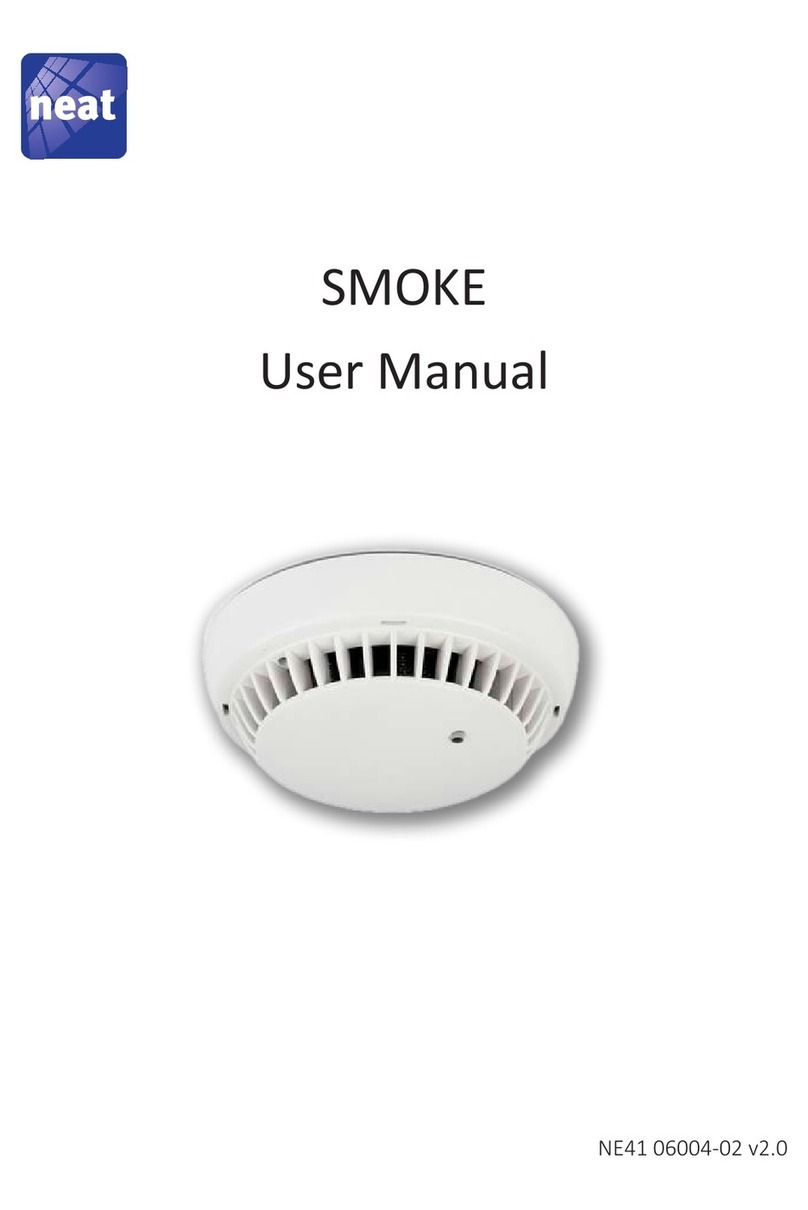
NEAT Electronics
NEAT Electronics SMOKE user manual
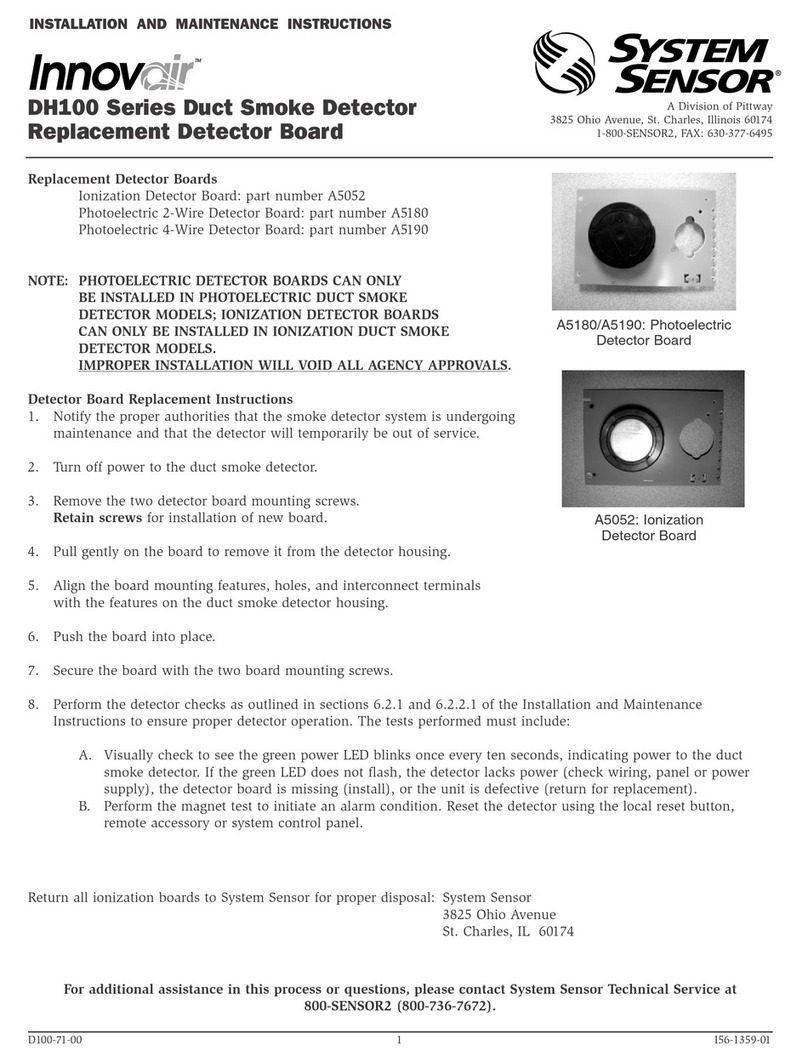
System Sensor
System Sensor DH100 Series Installation and maintenance instructions
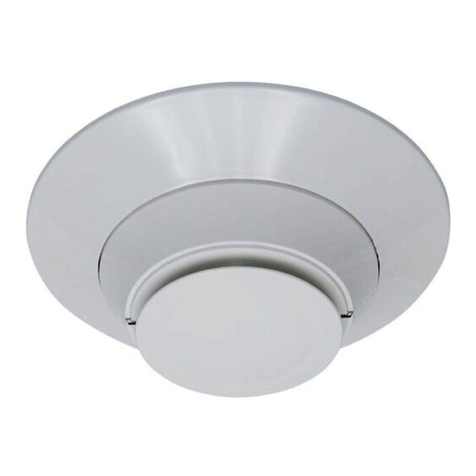
System Sensor
System Sensor 2351BR-IV Installation and maintenance instructions
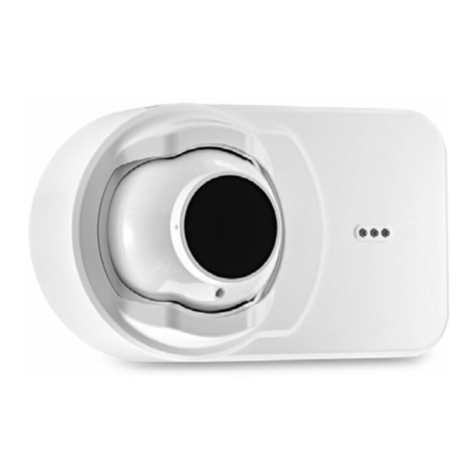
Fire-Lite Alarms
Fire-Lite Alarms OSI-RI-FL installation guide

Doro
Doro CARE user guide
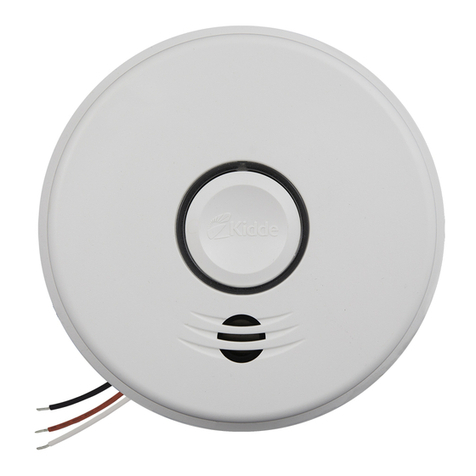
Kidde
Kidde P4010ACS-WCA user guide
